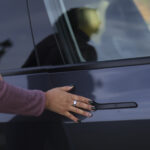The rise of interest and capability to 3D print auto parts promises to reshape the insurance and claims landscape, with significant implications for pricing, quality control and liability.
That’s one takeaway from a recent webinar exploring the evolving role of 3D printing in auto repairs.
The Collision Industry Electronic Commerce Association webinar on Mar 27 was titled “3D Printing in Collision Repair.” The one-hour webinar featured Harold Sears, head of the advisory council for Auto Additive, and Gerry Poirier, a consultant with Vector Squared.
Expanding The Use of 3D Printing in Auto Repairs
The discussion detailed the types of 3D-printed parts currently being manufactured, which range from simple brackets and trim pieces to more complex structural components. Materials used vary from plastics to metal composites, offering a spectrum of durability and application.
A notable example shared by Sears highlighted how automakers like Porsche are leveraging 3D printing to produce hard-to-source replacement parts for discontinued vehicle models, reducing repair time and costs. Sears said some repair shops are preparing to invest in 3D printers to create small, custom parts on demand, streamlining the repair process.
Pricing and Cost Efficiency
One of the most notable advantages 3D printing promises is its cost effectiveness compared to traditional replacement parts. Sears explained that 3D-printed parts often reduce costs by eliminating supply chain delays and allowing on-demand manufacturing.
However, pricing still remains variable because factors such as material quality and certification requirements affect overall expenses.
According to Sears, while some plastic components can be produced at a fraction of the traditional cost, metal-based 3D-printed parts may still be more expensive due to specialized manufacturing processes. However, at some point, there’s a potential for cost reduction over time as 3D printing technology advances and production scales up, panelists said.
Quality Control And Certification Concerns
Quality assurance remains a major point of discussion. Sears highlighted that while 3D-pritned parts can meet industry standards, there is a lack of uniform certification. Some manufactures have developed rigorous in-house testing procedures, but the absence of widespread regulatory oversight raises concerns about consistency and reliability in claims evaluations.
Poirier expressed concerns about the lack of industry-wide testing protocols, stating that without standardized certification, insurers are hesitant to approve 3D printed parts for safety-critical applications.”
Both Sears and Poirier suggested that an industry-led certification process could help bridge this gap, ensuring that 3D printed components meet established safety and durability benchmarks.
Implications for Insurance And Liability
Of course, the integration of 3D printed parts presents new liability challenges. Sears and Poirier cautioned insurers to assess whether these parts preform as expected, particularly in safety-critical applications. Without certification, disputes over liability may increase, especially in cases involving aftermarket or non-original equipment manufacturer parts.
Sears referenced a case in which an insurer denied a claim after a 3D-printed bumper reinforcement failed during a collision, leading to legal discussions around liability. Additionally, there was debate over whether insurers would require separate policy endorsements for vehicles using 3D printed components, as is the case for aftermarket modifications in some insurance policies.
Customer Impact And Industry Response
From a consumer perspective, the availability of 3D printed parts could reduce repair times and costs. However, questions remain about long-term durability and the willingness of insurers to cover such parts. Sears noted that customer confidence in 3D printing could become a standard practice for certain non-critical replacement parts, provided regulatory standards evolve to support its adoption.
Some experts have predicted that 3D printing could become a standard practice for certain non-critical replacement parts in the next five years, provided regulatory standards to support broader adoption.
However, there are manufacturers that have indicated that the use of 3D printed parts could void warranties unless they are certified by the OEM. This potential complication could impact customer decisions on whether to use 3D printed parts for repairs.
The Road Ahead for 3D Printing in Auto Repairs
Looking forward, Sear suggested that increased collaboration between insurers, manufacturers, and regulatory bodies is essential to ensure safe integration of 3D printed parts into the industry. He added that companies like Auto Additive are already working on 3rd party programs to address concerns over quality and liability.
Sears also touched on global trends, noting that some European countries are already implementing guide for the use of 3D printed auto parts, and U.S. Regulators may follow suit. If federal agencies established its standards, it could help insurers and repair shops navigate the challenges of liability and claims processes, according to him.
As 3D printing continues to gain traction, insurers and claims professionals must stay informed on evolving standards and legal considerations, the panelists said. The discussion seemed to underscore the need for ongoing dialogue between manufacturers, insurers, and regulators to ensure a balance between innovation and consumer protection. The future of 3D printing in auto repairs appears promising, but industry-wide cooperation will be necessary to ensure safe and efficient adoption.
Gallardo is an intern for Claims Journal working on a B.A. in journalism at Cal State Dominguez Hills University.
Was this article valuable?
Here are more articles you may enjoy.

 Tesla Drivers Are Buying Escape Tools and Cars to Avoid Getting Trapped Inside
Tesla Drivers Are Buying Escape Tools and Cars to Avoid Getting Trapped Inside  Marijuana’s Move to Schedule III: What it Really Means for Cannabis Insurance
Marijuana’s Move to Schedule III: What it Really Means for Cannabis Insurance  OpenAI And Microsoft Sued Over Murder-Suicide Blamed on ChatGPT
OpenAI And Microsoft Sued Over Murder-Suicide Blamed on ChatGPT  LA Fires Push Insurers’ 2025 Disaster Losses to $107 Billion
LA Fires Push Insurers’ 2025 Disaster Losses to $107 Billion 